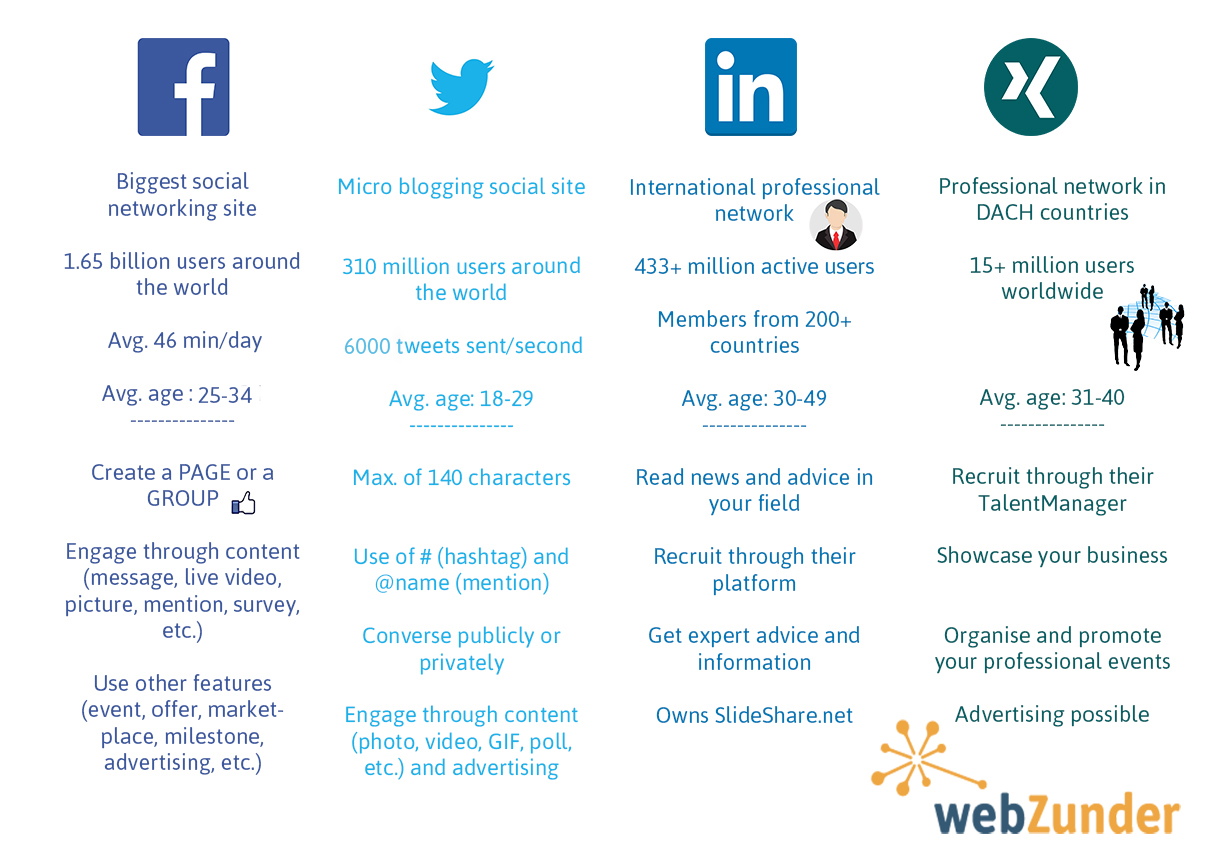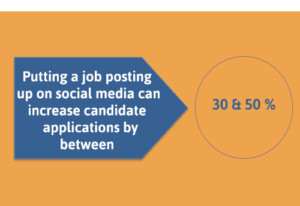
Choose your Social Media Networks
Of course, you could join many networks but you would probably lack time and resources to keep these profiles updated and to engage with their audiences (which is the point of social media in the first place). We therefore recommend to set up “the three must-have profiles” to start communicating in the social media world:
- Blog (to get more organic traffic to your site),
- Facebook page (to connect with the largest social media population), and,
- Twitter account (to reach other, like-minded individuals).
But often times, you will communicate in the name of your person and not the company – say, to recommend a specific agency or ask for a solution to a specific problem. That is why we also suggest to set-up a LinkedIn profile. (And if you are in Germany, then Xing is another great professional network to be active.)
Use a Multi-platform Approach
Pew Research Center found that more than 50% of adults online (and 91% of retail brands) use two or more social media sites. So your message could be seen multiple times…but do you post the same information?
Our recommendation: No. We crafted a few examples based on our experience to give you ideas of how you can use sharing content across multiple social media platforms to your advantage:
Example 1: Social Recruiting
Your goal: get the right candidate to read your job description and apply on your website for a specific position.
LinkedIn (and/or Xing):
- Post the new job on your company page.
- Ask your employees, partners and connections to share the job with their networks.
- Post your jobs in various groups related to the skillset you require.
- Research specific keywords to find people you could invite to apply.
Twitter:
- Share the link to your job description.
- Ask the community to retweet.
- Mention specific people or companies and ask them directly if they know anyone who could fit the profile you are looking for.
- Include specific hashtags in your tweet that are most relevant to the type of person you are looking for.
Facebook:
- Post a more human aspect of your company to feature your environment, your culture, employees, etc. to give candidates an idea of who you are and what daily life looks like.
- Mention that you are looking for candidates for the specific position – and not just on your company page but also on your personal profile.
- Post the position in the groups that you follow.
Advertising (if available): advertise on LinkedIn, Xing and Facebook (based on your target audience).
Other ideas:
- Post in free local directories to get more visibility.
- Work with a recruiter to reach a different pool of candidates.
Example 2: New product, service or offer
Your goal: stimulate interest and awaken a need, which will lead to a sale

Source: Dix-Katre Blog, “Benefits of blogging Infographic”, June 9, 2016.
Blog: Share your expertise in regards to your product. E.g. as a bike shop, you can share the top 10 important elements when looking for bicycle.
Facebook:
- Highlight your blog content.
- Share pictures of the new bicycle.
- Post a video where you explain the benefits, show how to use the product or how to take care of the bicycle.
- Offer a discount to your fans for a short period of time.
- Invite people to an event to test the bicycle.
- Start a cycling group and invite people to ride with you.
- Create polls about the cycling world, i.e. favorite cyclist, best cycling destination, etc.
Twitter:
- Highlight your blog content – short with 2-3 hashtags.
- Answer questions in the community.
- Participate in conversations about the Tour de France.
LinkedIn (and/or Xing):
- Share that you are the exclusive provider of a specific brand of bicycle.
- Keep your company page updated.
- Sign up to groups such as “World Cycling Industry”.
Other ideas: If budget available, advertise on Facebook.
These are just a few ways to use social media to reach specific customers or increase awareness.
In Conclusion
There is no silver bullet in social media marketing. But we will leave you with a few last thoughts to help you with cross-promotion on social media:
- Understand when your offer is most relevant to your customers, when they look for your solution and what makes them tick.
- Get creative when communicating with your audience to stand out of the crowd.
- Take the time to customize your message across platforms.
- ALWAYS include a call-to-action.
- Test, test and test again.
- Repost your content at a different time with a different tweet message.
♦ BONUS ♦
Here are a few important points and statistics you should keep in mind when using the various social media networks highlighted in this article.

Key statistics and features for the most important social media networks
Sources:
- http://www.alexitauzin.com/2013/04/combien-dutilisateurs-de-facebook.html
- https://zephoria.com/top-15-valuable-facebook-statistics/
- http://fredericgonzalo.com/2014/09/11/10-bonnes-pratiques-dentreprises-sur-linkedin/
- http://www.mirror.co.uk/news/world-news/average-facebook-user-uses-site-6166968
- http://www.internetlivestats.com/twitter-statistics/
- http://www.pewinternet.org/2015/08/19/the-demographics-of-social-media-users/
- https://press.linkedin.com/about-linkedin
- https://recruiting.xing.com/en/facts-and-figures/
